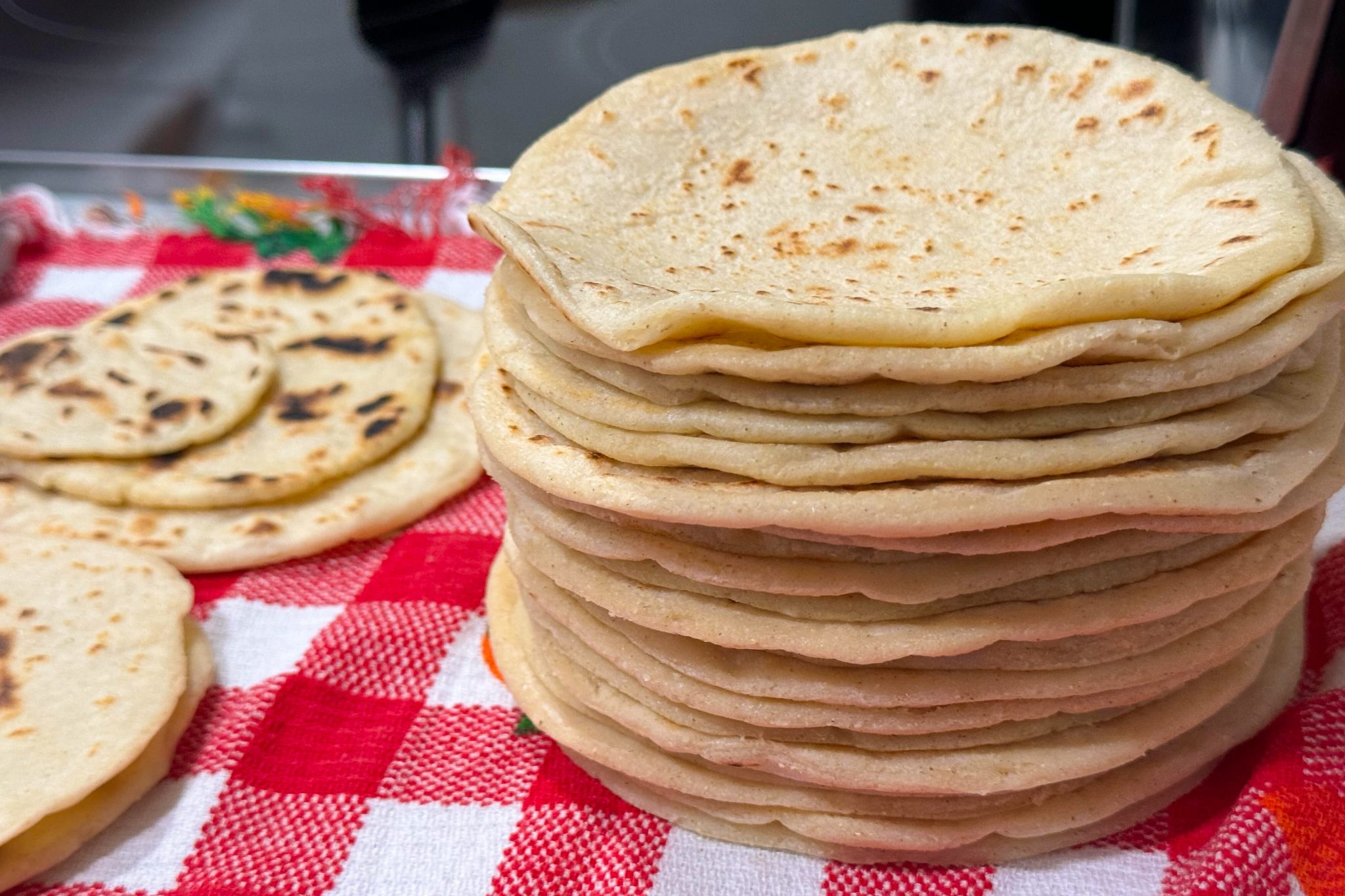At least once a week, my mom makes a huge batch of tortillas to accompany our meals. Whether they’re paired with queso duro, arroz curtido or home-made carne guisada, tortillas will undoubtedly be on our table.
Tortillas — thin, circular flatbreads made from flour or corn masa — can be traced back to pre-Columbian Mesoamerica and have since become one of the most versatile foods in Latin America. With tortillas, you can make common dishes such as burritos, tacos and quesadillas or more complex recipes such as chilaquiles or huevos rancheros.
Tortilla recipes vary by country, but in my Salvadorian family, we make tortillas de maíz, or corn tortillas. Here is an easy-to-follow recipe.
You don’t need much to make tortillas — all you need is masa harina, which is a type of corn flour, and warm water. You can also use all-purpose flour, oil, salt and lime.
First, take a large bowl and add the amount of harina based on how many tortillas you plan to make. There’s not an exact measurement, but four cups of harina might be the average amount for a decent pack of tortillas. Next, pour in ⅔ of the amount of water proportionate to the harina into the bowl and knead the mixture together to create the masa.
[UMD screening revisits controversial feminist art from the 90s]
If the masa is too crumbly, add a bit more water. If it is too sticky or liquidy, add as much flour as needed until it reaches the desired texture, which should feel like Play-Doh. Some people also add small amounts of flour or oil to help adjust the consistency of the masa and make it more malleable.
Scoop up some masa and shape it into small balls each about the size of your palm. Next, flatten the masa to make your tortillas.
The first way to flatten is by hand, just the way my mom makes it. You can place a non-stick plastic sheet on the counter and the masa ball on top. Press down and gently rotate the dough with one hand, and with the other hand curved, you should shape the tortilla into a circle. Keep doing this until your tortilla is a perfectly flat circle.
If you’re not confident enough to do it by hand, you can use a rolling pin or a tortilla press. When using the tortilla press, place parchment paper on both sides of the masa to prevent it from sticking to the press. Also, make sure the tortilla does not become too thin, or it may break when you lift it.
The best part about preparing tortillas is that you can always start over if something goes wrong. If it’s too thin, simply roll it back into a ball and try again or add more masa. If it doesn’t flatten the way you want, remove some masa.
Traditionally, one cooks the tortillas on a comal, which is a smooth, round griddle, but any flat pan or skillet will do.
Place your tortilla on the dry comal and let it cook for 30 to 45 seconds before flipping it over. If one side of the tortilla appears slightly undercooked, flip it onto that side and let it sit for just 20 more seconds — any longer and it might become overcooked. The cooking time is crucial and easy to get wrong, so pay close attention to your tortilla’s appearance.
[2024 VMAs tap into nostalgia, iconic performances]
Once you’re done, your tortillas can be wrapped up in a kitchen towel and stored in a cupboard for up to a week. You can also store them wrapped in a kitchen towel inside a plastic bag in the refrigerator, where they will last for a little longer.
Now, whether you’re recreating your favorite Latin recipe or just savoring them with a side dish, these fresh tortillas will enhance your meal. ¡Buen provecho!



